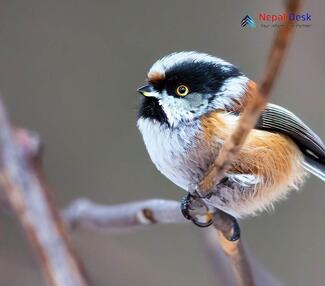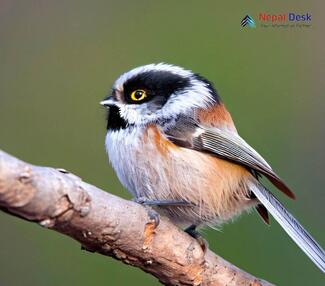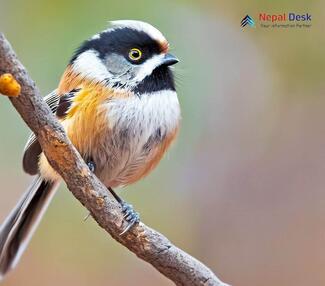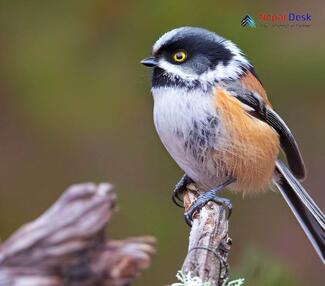Nestled amidst the breathtaking landscapes of Nepal, the Black-throated Tit (Aegithalos concinnus) is a captivating bird species that continues to impress bird enthusiasts and nature lovers alike. With its distinctive appearance, lively behavior, and intriguing habitat, getting to know this unique bird is a delightful experience. In this section we'll be taking an in-depth look at the profile of Black-throated Tit, uncovering its distinctive features, natural habitat, and more.
Appearance and Identification
The Black-throated Tit is a small passerine bird, measuring around 10-12 cm in length and weighing just 4-9 grams. Its distinctive plumage includes a striking combination of black, white, and chestnut colors. The bird's head is predominantly black with white cheeks and eyebrows, while its chestnut-colored back sharply contrasts against its black throat, which gives it its name. Additionally, the Black-throated Tit's tail feathers exhibit alternating black and white bands that further enhance its appealing appearance.
Distribution and Habitat
The range of Black-throated Tit stretches across the Himalayas from northern India to southeastern Asia. While commonly found in Nepal, this fascinating bird species also inhabit parts of Bhutan, China, Myanmar, Vietnam, and Taiwan. The Black-throated Tit favors montane forests, particularly those situated between 1,500-3,700 meters above sea level. These birds can be found dwelling in mixed coniferous-broadleaf forests or secondary-growth forests containing evergreen oak or Rhododendron species.
Behavior and Ecology
Living predominantly in groups or mixed-species flocks outside the breeding season, the Black-throated Tit is a sociable species characterized by its active and energetic nature. These birds forage primarily in trees, hopping from branch to branch in search of their preferred diet, which consists mainly of insects and spiders. However, they are known to consume seeds and fruits when insects become scarce.
The breeding season for Black-throated Tit typically begins in March and lasts until June. During this period, the Black-throated Tit builds an elaborate bag-shaped nest using moss, lichen, spider webs, and other plant materials. This nesting masterpiece is often suspended from branches or attached to the side of tree trunks. The female Black-throated Tit lays around 2-7 eggs which hatch after an incubation period of roughly 12-15 days.
Conservation Status
Fortunately, the Black-throated Tit is classified as a species of Least Concern by the International Union for Conservation of Nature (IUCN). Its widespread distribution and seemingly stable population make it less vulnerable to significant threats. However, ongoing habitat degradation due to deforestation and human encroachment remains a growing concern for preserving this enthralling bird's natural environment.
In conclusion, the Black-throated Tit (Aegithalos concinnus) is a fascinating bird species that never fails to captivate those who come across it in the stunning landscapes of Nepal and beyond. By learning more about this extraordinary bird's profile, we not only enhance our appreciation for nature but also contribute to its conservation efforts by raising awareness about its unique characteristics and habitat needs.




